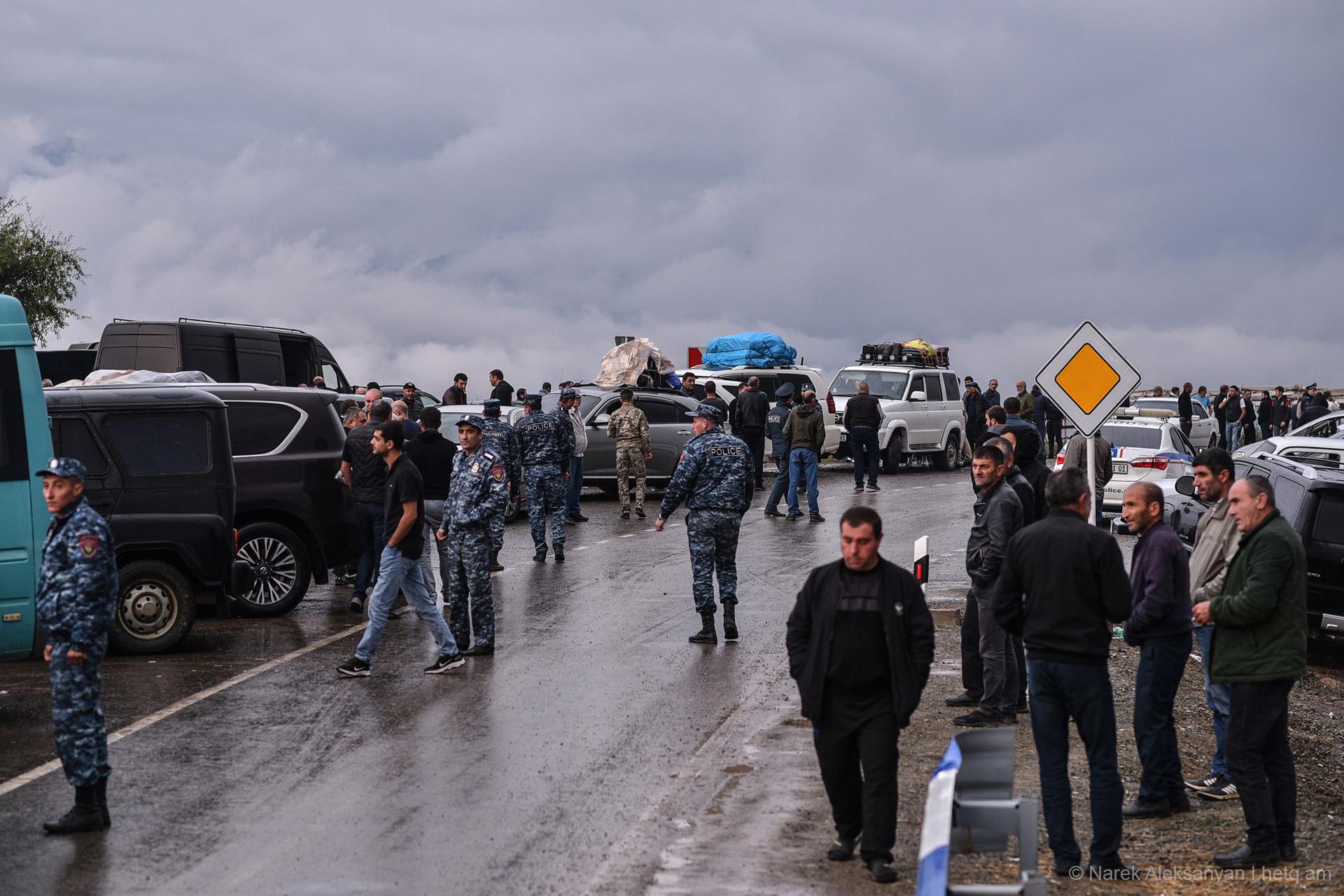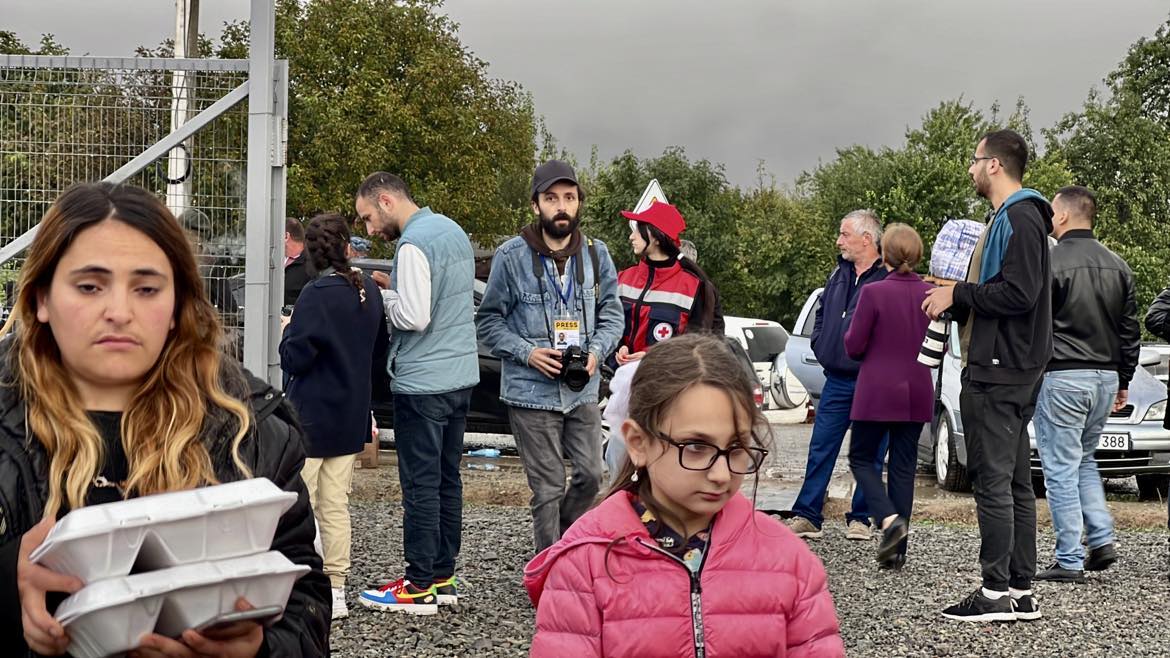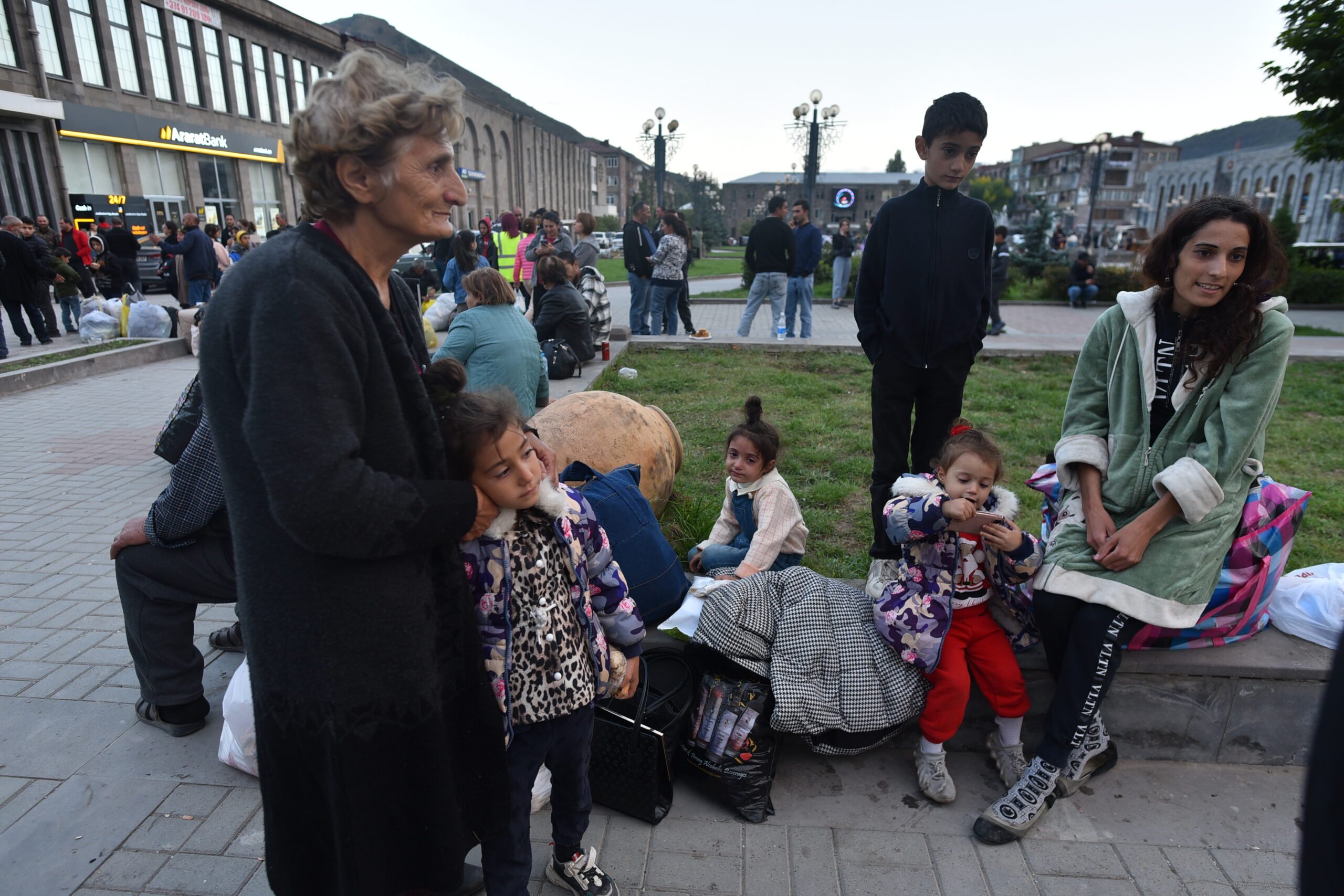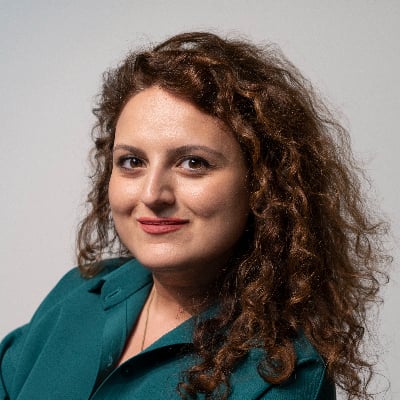A photo can tell a powerful story, capturing a moment’s emotions and visual details. Photojournalist Narek Aleksanyan from “Hetq” documented the heartbreaking images of loss and pain in his attempt to convey the forced displacement of the people of Artsakh as they crossed the border into Armenia. Through his camera lens, he aimed to tell the world about the loss of their homeland and the uncertainty that lay ahead. For several days, he worked tirelessly to share this story with local and foreign media.
Narek, you covered the entry of displaced Artsakh citizens to Armenia. When did you go to Kornidzor? What was beyond your camera?
On September 19, when Azerbaijan attacked Artsakh, daily demonstrations and rallies took place in Yerevan. I was covering these events when the forced displacement of Artsakh residents began on September 24. It was announced that a large demonstration would take place in Yerevan that day, so I decided to stay, anticipating important events and potential clashes. However, nothing significant occurred that day. The following day, I went to Kornidzor instead.
I arrived at Kornidzor in the afternoon. A steady stream of people came in. Some arrived in cars, while others came in buses. People queued up to sign the papers, and although there was some queuing at times, everything was running smoothly overall.

25.09.2023, Kornidzor
Were there many obstacles or restrictions that hindered the work of the media?
There were no significant issues or restrictions that impeded the work of journalists. The only place where filming was prohibited was at the registration station. Occasionally, some journalists managed to enter the area, take pictures and leave unnoticed. However, when the security guards became aware of this, they requested that any taken photos be deleted.
There were a lot of people, and people were providing personal information, including the number of family members and presenting their passports. I believe that this might have been the reason for the ban.
You have experience working in crises, but what made this case extraordinary, and what difficulties did you encounter?
An overwhelming amount of visual content was present. A photojournalist should be able to capture everything, but it was not physically possible in this case.
At that moment, there was a need to make prompt decisions on what to prioritize and focus on. Should we follow a couple of families to their allocated temporary accommodation and capture a comprehensive story, or should we remain on site, take numerous pictures, and document as much as possible?

Narek Aleksanyan in Kornidzor. Photo: Hayk Makiyan
You chose to stay on the site.
I decided to stay and focus on taking photos and collecting information. I made sure to document everything. Additionally, I worked for several international photo and video agencies, creating visual and video stories for them. It was important to me that people outside Armenia were informed about what was happening in our country. However, organizing and sending content to local and international media was time-consuming, so I couldn’t take as many pictures as I would have liked.
Working in difficult situations has been a part of my job, but the experience I had recently was unlike any other. No journalist in the Armenian media had ever worked in such a challenging environment. It was emotionally taxing as well. However, amidst all the chaos, I found myself unable to comprehend the gravity of the situation.
My main goal was to capture as much as possible so as not to miss an important episode. Empathy comes to the fore in such situations. After coming to Yerevan, I started to feel and understand what I saw.
In times of crisis, it is crucial for journalists to report on individuals without causing harm. How successful were you in achieving this?
Based on experience, you intuitively know how to help without harm. Emotional close-up shots are impactful but ethically incorrect, so I refrain from them.
As I mainly took reportage photos, which included large groups of people in queues, I captured the situation with general shots. Therefore, I did not require specific consent or permission from individuals to take their pictures.
When taking pictures, I always make an effort to obtain consent, even if it is non-verbal. To clarify my intentions, I often give a look, suggesting I am about to take a picture. If the person does not object, I wait a few seconds to give them time to prepare before taking the photo. These small professional nuances are essential to keep in mind.
There was only one case when I wanted to share the story of a particular family with foreign media; I obtained written consent from the parents to film their children.

Grigoryan family. Photo: Narek Aleksanyan
There were times when individuals did not want to be recorded by my camera, but after approaching them and engaging in conversation, they shared their stories. It became clear that people often need someone to listen to them.
What other roles can a photojournalist play besides providing information and reporting on what happens in complex situations?
A photojournalist serves multiple purposes. Firstly, they provide information to the public through an image. Secondly, they perform crucial fact-finding work by collecting visual evidence.This documentation is crucial evidence to be presented in international instances and human rights reports, emphasizing the importance of recording the facts.
Photos often serve as fast and effective tools for solving social problems. There have been instances where, after publishing a photo, people called in to ask for the family’s contact details to offer help. Additionally, posting specific images on websites and social media platforms has resulted in targeted assistance being provided to families in need.
Can you think of any errors or omissions that you may have missed in hindsight?
I regret my decision to return on September 28. It would have been possible to work for two more days. After several days of intense work in Yerevan, followed by four days of over-stressed, over-emotional work in Kornidzor and Goris, perhaps fatigue set in, and I couldn’t accurately count the numbers of people or predict how many more days the flow would continue. I had hoped to rest and then return to Kornidzor.







